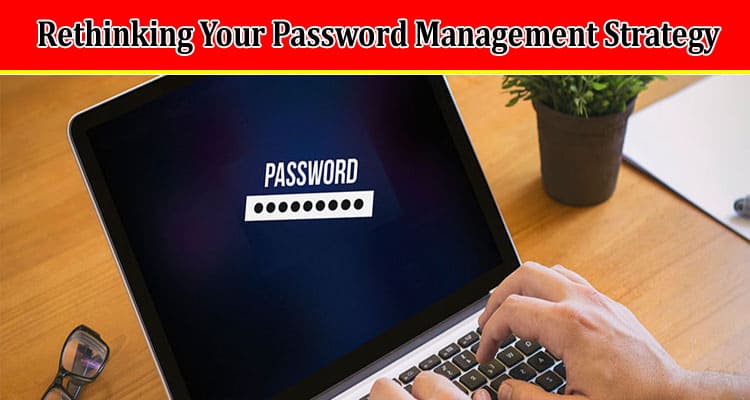As remote work becomes the norm, organizations face an increasingly complex challenge: safeguarding hybrid identities in an environment where over 60% of breaches involve credential theft, according to Verizon’s Data Breach Investigation Report. With the stakes higher than ever, rethinking your password management strategy is not just a recommendation; it’s a necessity.
In this blog post, we’ll explore the evolving landscape of cybersecurity, the significance of robust password security postures, and actionable steps organizations can take to fortify their defenses against the looming threat of a breach of security.
The Shifting Landscape: Remote Work and Credential Theft
The rise of remote work has transformed the traditional workplace, bringing about unparalleled flexibility and efficiency. However, it has also ushered in new challenges, particularly in the realm of cybersecurity. Credential theft, where malicious actors gain unauthorized access by exploiting compromised usernames and passwords, has surged to the forefront of cyber threats.
Key challenges in the remote work environment include:
- Expanded Attack Surface: Remote work introduces a more expansive attack surface, with employees accessing corporate networks from various locations and devices. This diversification creates new entry points for potential threats.
- Credential-Centric Attacks: More than 60% of data breaches involve credential theft, making it the most prevalent type of attack. Cybercriminals actively target usernames and passwords to gain access to sensitive information and critical systems.
- Hybrid Identity Management: Organizations now manage hybrid identities, encompassing both on-premises and cloud-based systems. This complexity adds a layer of challenge in ensuring consistent and secure password management across different platforms.
The Significance of Password Security Postures
A robust password security posture is foundational to defending against credential-centric attacks. Passwords act as the first line of defense, and their compromise can lead to unauthorized access, data breaches, and severe repercussions for organizations.
Key aspects of password security postures include:
- Complexity and Length: Encourage the use of complex passwords with a combination of uppercase and lowercase letters, numbers, and symbols. Longer passwords are generally more secure and resistant to brute-force attacks.
- Multi-Factor Authentication (MFA): Implement Multi-Factor Authentication (MFA) to add an extra layer of security. MFA requires users to provide multiple forms of verification, such as a password and a temporary code sent to their mobile device.
- Regular Password Changes: Enforce regular password changes to mitigate the impact of compromised credentials. Regularly updating passwords reduces the window of opportunity for attackers using stolen credentials.
- Education and Training: Provide comprehensive education and training on password best practices. Empower users to create strong, unique passwords, recognize phishing attempts, and understand the importance of safeguarding their credentials.
Actionable Steps to Strengthen Password Security
- Password Policy Review: Begin by reviewing and updating your organization’s password policies. Ensure that they align with industry best practices and encompass complexity requirements, regular password changes, and the use of MFA.
- MFA Implementation: Implement Multi-Factor Authentication across all relevant systems and platforms. This additional layer of security significantly reduces the risk of unauthorized access, even if passwords are compromised.
- Password Encryption: Ensure that passwords are stored and transmitted securely through encryption. This protects sensitive information from being intercepted or accessed by unauthorized parties.
- Password Managers: Encourage the use of password managers to generate, store, and manage complex passwords. Password managers simplify the process for users and promote the use of unique passwords for each account.
- User Training Programs: Launch comprehensive user training programs that educate employees on the importance of password security. Cover topics such as recognizing phishing attempts, creating strong passwords, and reporting suspicious activities promptly.
- Regular Security Audits: Conduct regular security audits to assess the effectiveness of your password security measures. Audits help identify weaknesses, areas for improvement, and potential policy violations.
- Incident Response Planning: Develop and regularly update incident response plans specifically addressing potential breaches of security, including those involving credential theft. A well-prepared incident response plan ensures a swift and effective response in the event of a security incident.
- Monitoring and Anomaly Detection: Implement advanced monitoring and anomaly detection tools to identify unusual patterns of behavior that may indicate unauthorized access or potential credential compromise. Early detection is key to minimizing the impact of a breach.
Looking Ahead: Building a Culture of Cybersecurity
As organizations navigate the evolving threat landscape, it’s crucial to recognize that cybersecurity is not a one-time effort but an ongoing journey. Building a culture of cybersecurity within the organization involves instilling best practices, fostering awareness, and continuously adapting to emerging threats.
Here are key elements of a cybersecurity culture:
- Continuous Training and Awareness: Provide ongoing training to employees, keeping them informed about the latest cybersecurity threats, attack vectors, and best practices. An aware and educated workforce is an organization’s first line of defense.
- Leadership Support: Secure commitment from leadership to prioritize and invest in cybersecurity initiatives. A top-down approach ensures that cybersecurity is embedded in the organization’s DNA and receives the necessary resources.
- Collaborative Approach: Foster collaboration between IT, security teams, and end-users. A collaborative approach ensures that everyone is aligned with cybersecurity goals and actively contributes to the organization’s overall security posture.
- Regular Security Drills: Conduct regular security drills and simulations to test the organization’s readiness to respond to security incidents. These drills help identify areas for improvement and refine incident response plans.
In the era of remote work and escalating credential-centric threats, rethinking your password management strategy is not just a response to a potential breach of security; it’s a proactive step towards safeguarding your organization’s sensitive information and critical systems. As the cybersecurity landscape continues to evolve, staying ahead of potential threats requires adaptability, vigilance, and a commitment to continuous improvement. By reevaluating and enhancing password security measures, organizations can navigate the complexities of remote work with confidence, ensuring the resilience and security of their digital assets.





